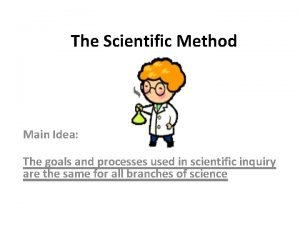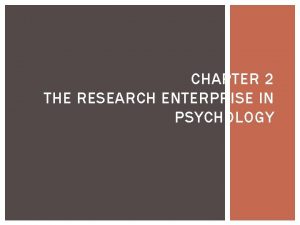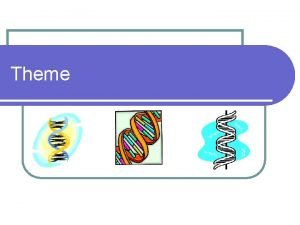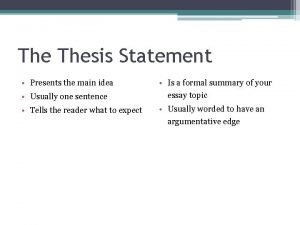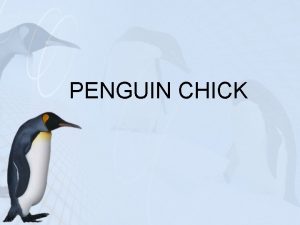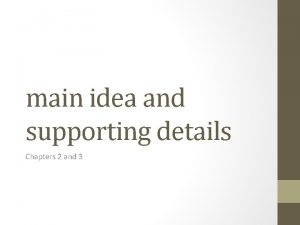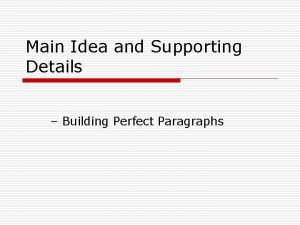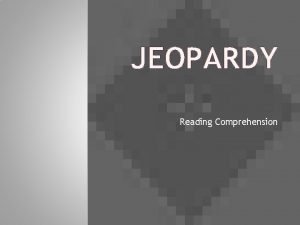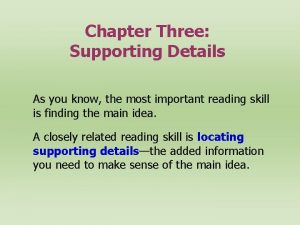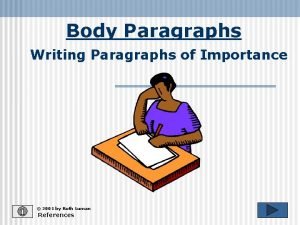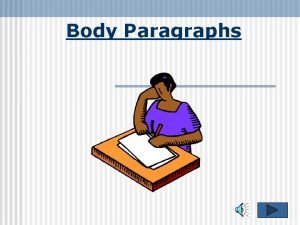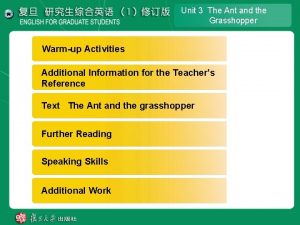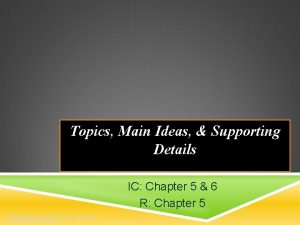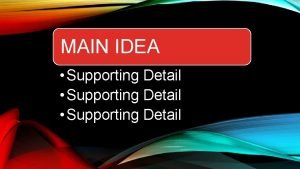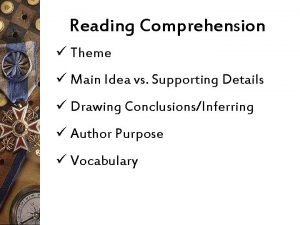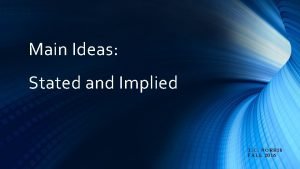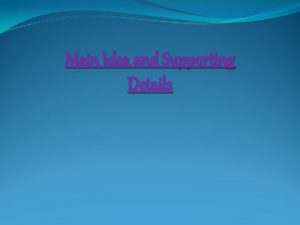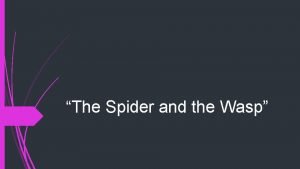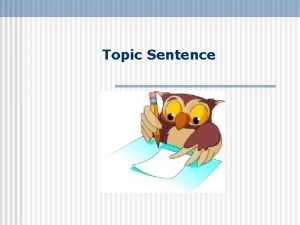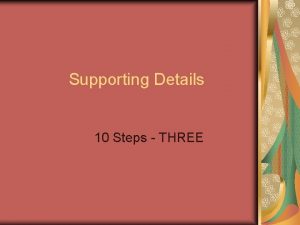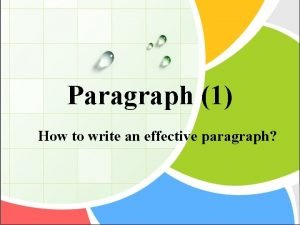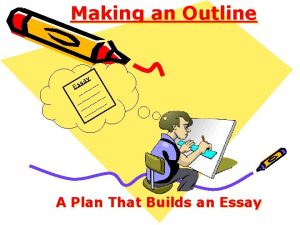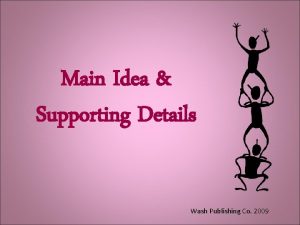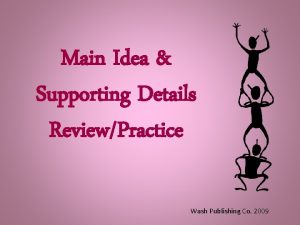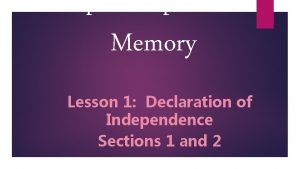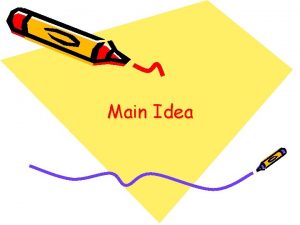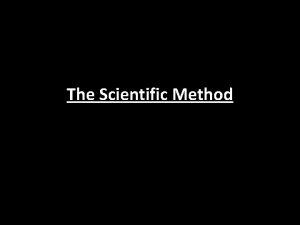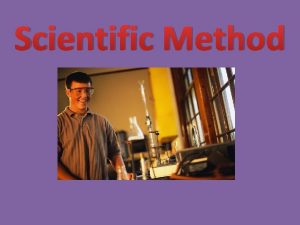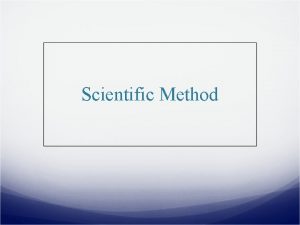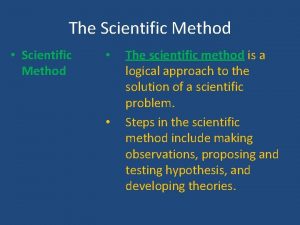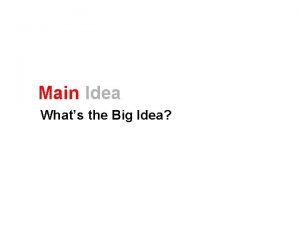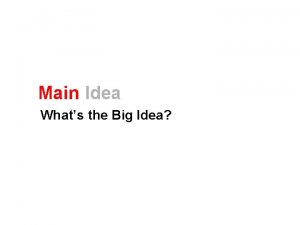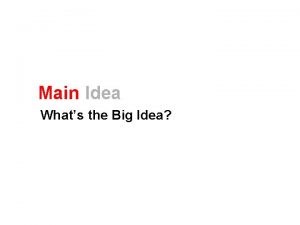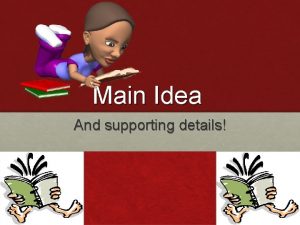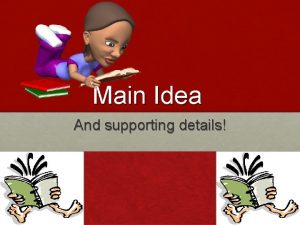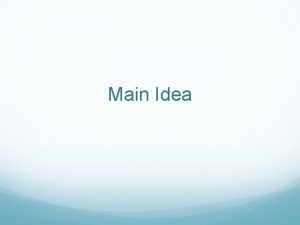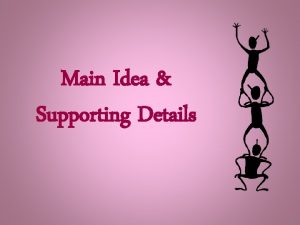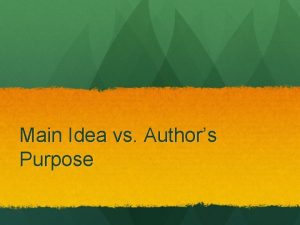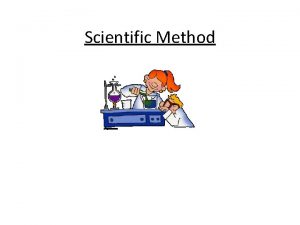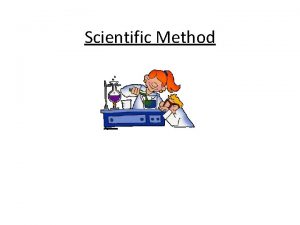The Scientific Method Main Idea The goals and






































- Slides: 38

The Scientific Method Main Idea: The goals and processes used in scientific inquiry are the same for all branches of science

Goals and Processes of Science • The goal of science is to understand explain events in nature and use those explanations to make useful predictions. • Scientific inquiry is the process used to understand nature based on evidence gained through observation and experimentation.

The Scientific Method • Most scientific inquiry is carried out using the Scientific Method. • The Scientific Method is an organized and logical process of seeking answers to scientific questions.

Elements of the Scientific Method 1. 2. 3. 4. 5. 6. 7. 8. 9. Choose an investigative focus Gather information on the topic to be studied Form a testable hypothesis Test the hypothesis Collect and Record Data Analyze and Interpret Data Draw Conclusions Replicate the Tests Publish Findings for Peer Review

1. Choose an investigative focus • What sparks scientific curiosity? • Real life problems (ex. Ebola outbreak) • Scientific literature or discussion • Observations *Direct – see the event occur *Indirect – see effects of the event

Types of Observations Direct – see the event Indirect – see effects of event

2. Gather information * Review scientific literature * Communicate with others

3. Form a testable hypothesis • Hypothesis – a possible explanation for a natural phenomena (event or observation) • Suggests a cause and effect relationship between variables • MUST be TESTABLE through observation or experimentation • Forms basis for predictions – expectation about what will happen in the future if the hypothesized relationship exists.

3 Questions to ask yourself when Writing Hypothesis 1. Does the hypothesis suggest a relationship between variables ? ( Relationship of 2 variables) 2. Can a test be done to determine the relationship between the variables? (Testable) 3. Can it predict future events? (Predictive)

Check your understanding. Is this a Hypothesis? • If skin cancer is related to ultraviolet light, then people who regularly use tanning booths will have a greater chance of getting skin cancer than those who don’t. Relationship between variables? Testable? Predictive?

Check your understanding. Is this a Hypothesis? If I play the lottery, then I will get rich Relationship? Testable? Predictive?

Check your understanding. Is this a Hypothesis? If plants need the nitrogen to grow, then plants given fertilizer containing nitrogen will grow larger than plants that do not receive the fertilizer. Relationship? Testable? Predictive?

Check your understanding. Is this a Hypothesis? If gum has a high sugar content, then chewing the gum will give me many cavities. Relationship? Testable? Predictive?

!Careful! Just because “If…then” is in the statement doesn’t necessarily mean it’s a hypothesis. Just because “If…then” is NOT in the statement doesn’t mean it isn’t a hypothesis

4. Test the Hypothesis Methods include: *Questioning – Surveys, interviews (forensic, medicine, psychology) *Field Observations – used to study wildlife and human behavior *Controlled experiments Primatologist Dr. Jane Goodall

Controlled Experiments • Used to determine the effects of changing one variable while all other variables are held constant • Variable – a measurable factor that can vary in amount Ex: Amount of Temp, light, water, medication, time Nonexamples: • There are 3 types of variables used in experiments: 1. Independent 2. Dependent 3. Constant

Variables in Controlled experiments 1. Independent variable – the factor that is purposely varied to see if it has any effect on another variable. • Also called the “Manipulated Variable” • Only one should be used in an experiment. • Plotted on X axis Ex. Amount of Fertilizer

Variables in Controlled Experiments 2. Dependent variable – the factor that is monitored to see if/how it “responds” to changing the independent variable • Also known as the “responding variable”. • It may or may not be affected by the independent variable. • Plotted on the Y axis • Ex. Number of tomatos per plant

Independent variable – X axis Dependent variable – Y axis

Variables in Controlled Experiments • It is important to identify other factors that could affect the dependent variable. • These must be kept “constant” (unchanging) so that they don’t interfere with the action of the independent variable. If these aren’t controlled, it will be impossible to determine which factor was responsible for any changes observed. • Constants – factors that are included but NOT varied in an experiment. These factors are kept “constant” in both setups. • Ex. Amount of water, Amount of sunlight

Controlled experiments must have 2 groups of subjects 1. Experimental group – this group of subjects does receive the independent variable 2. Control group – this group of subjects does not receive the independent variable. • This group is used as the basis for comparison Both groups include all the constant variables

Let’s Review that Again…. • Subjects in the two setups should be treated exactly the same EXCEPT the subjects in the experimental set up are the only ones that receive the independent variable. • Only one independent variable should be tested at a time. • Include the largest number of subjects as possible.

5. Collect and Record Data Two categories of data (collected information): 1. Qualitative – Descriptive information based on observations made with the senses ( sight, sound, smell, touch) Ex. The whale’s skin is gray and smooth. • Subjective–depends on person’s viewpoint

2. Quantitative – Measurable information that is written as a number value. Ex. The whale’s mass is 300 kg. • Objective – does not depend on person’s viewpoint/ less likelihood of bias

6. Analyze and Interpret Data • Data is organized and statistically analyzed so that conclusions can be made. • Methods of organizing recorded data in order to look for patterns: *Charts, *Graphs, *Tables, • Sources of error are identified

7. Draw Conclusions • Conclusions are based on a comparison of the experimental data with the original hypothesis Data supports hypothesis - Accept hypothesis Data does not support hypothesis- Reject hypothesis or Revise

A hypothesis can NEVER BE PROVED no matter how much data supports it. Why can they NOT BE PROVEN Ms. Soraparu? ? ? Because we cannot completely know, or control, all variables that may affect the experimental outcome PROVE

“P” is a Dirty Word in Science PROVE

8. Replicate the Test • Experiments are repeated many times using the same procedure (protocol) to ensure the results are valid and reliable and not due to chance • Valid – how well did the test measure what it was designed to measure – was the experiment well designed? • Reliable - Other researchers must be able to perform exactly the same experiment, under the same conditions and get the same results

9. Publish Findings for Peer Review – Experimental methods and results are published in scientific journals so that they may be critiqued and retested by other scientists

Questions that reviewers ask: “What controls were used? ” “Was the sample size large enough? ” “How many trials were carried out? ” “Did experimenter bias affect results? ”

The Story of Thalidomide explains the importance of retesting and peer review

Thalidomide Drug developed in 1950’s Germany to treat: *Morning Sickness in pregnancy *Myeloma *Forms of leprosy

1962 photo of a baby born to a mother who had taken thalidomide while pregnant. The baby has an extra appendage connected to the foot and a malformation of the right arm.

1962: FDA pharmacologist Dr. Frances Kelsey receives an award from President Kennedy for blocking sale of thalidomide in the United States.

Children of Thalidomide

Billy Joel’s “We Didn’t Start the Fire”

All scientists include all these steps of the scientific method into their research but not necessarily in the same order. Data Support Hypothesis Data DO NOT Support Hypothesis
 Tell more about the main idea
Tell more about the main idea Strategic goals tactical goals operational goals
Strategic goals tactical goals operational goals Strategic goals tactical goals operational goals
Strategic goals tactical goals operational goals Is the theme the main idea
Is the theme the main idea Suporting idea
Suporting idea What's the big idea
What's the big idea What is topic sentence example
What is topic sentence example Thalidomide babies images
Thalidomide babies images Information gathered during an experiment
Information gathered during an experiment General goals and specific goals
General goals and specific goals Motivation in consumer behaviour
Motivation in consumer behaviour Chapter 2 the research enterprise in psychology
Chapter 2 the research enterprise in psychology Topic sentence about train system
Topic sentence about train system Whats a theme
Whats a theme Thesis main idea
Thesis main idea Penguin chick main idea and details
Penguin chick main idea and details Minor supporting details
Minor supporting details Main idea test
Main idea test Paragraphs with main idea and supporting details
Paragraphs with main idea and supporting details Jeopardy reading comprehension
Jeopardy reading comprehension Main idea and supporting details examples
Main idea and supporting details examples Topic sentence examples paragraph
Topic sentence examples paragraph Example of topic sentence
Example of topic sentence Class 10 english unit 3 the ant and the grasshopper
Class 10 english unit 3 the ant and the grasshopper Topic, main idea supporting details
Topic, main idea supporting details Signal words
Signal words Supporting detail 1
Supporting detail 1 Reading comprehension main idea and supporting details
Reading comprehension main idea and supporting details Stated and implied meaning examples
Stated and implied meaning examples Whats a supporting idea
Whats a supporting idea What is the main idea of the spider and the wasp
What is the main idea of the spider and the wasp Example of main idea and supporting details
Example of main idea and supporting details Topic sentences definition
Topic sentences definition Outline supporting details
Outline supporting details Gerrc paragraph
Gerrc paragraph Making an outline example
Making an outline example Main idea and supporting details
Main idea and supporting details What is main idea and supporting details
What is main idea and supporting details What is the main idea of hope despair and memory
What is the main idea of hope despair and memory







